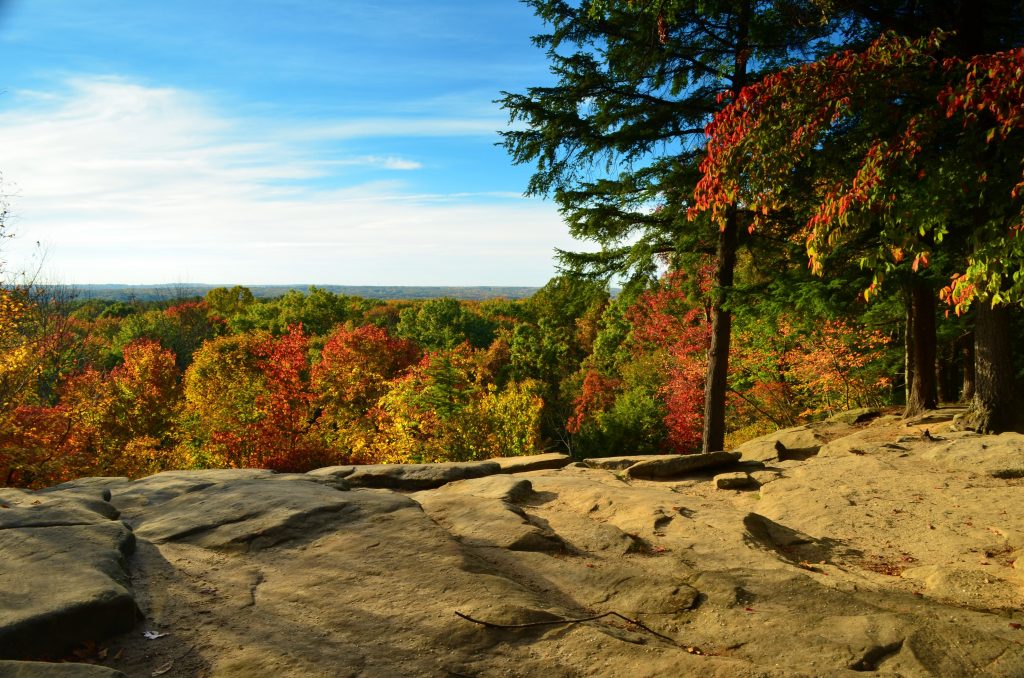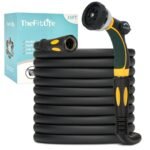Cuyahoga Valley National Park is a hidden gem located in Northeast Ohio, just a short distance from the urban areas of Cleveland and Akron. Spanning over 33,000 acres, the park is a refuge for native plants and wildlife, and provides a variety of activities for visitors to enjoy. From hiking and biking to birdwatching and scenic train rides, there is something for everyone in this beautiful park.
Discover the Beauty of Nature with Our National Parks Guide
Managed by the National Park Service, Cuyahoga Valley National Park is one of the few national parks located in the state of Ohio. The park is situated along the winding Cuyahoga River, which gives way to deep forests, rolling hills, and open farmlands. In addition to its natural beauty, the park is also home to several small towns that offer a glimpse into the region’s rich history and culture.
Whether you’re a nature lover, history buff, or simply looking for a peaceful escape from the hustle and bustle of city life, Cuyahoga Valley National Park is definitely worth a visit. So pack your bags, grab your hiking boots, and get ready to explore all that this beautiful park has to offer!
History
Cuyahoga Valley National Park has a rich history that dates back to the time of Native American tribes. The park is located in Ohio and covers over 33,000 acres of land. The park’s history can be divided into three main sub-sections: Native American History, European Settlement, and National Park Designation.
Native American History
The area that is now Cuyahoga Valley National Park was home to several Native American tribes, including the Erie, Iroquois, and Wyandot. These tribes relied on the Cuyahoga River for transportation and fishing. They also hunted and gathered food from the surrounding forests and fields. The Native Americans used the area for thousands of years before European settlers arrived.
European Settlement
In the early 1800s, European settlers began to move into the Cuyahoga Valley area. They cleared the land for farming, built homes, and established small communities. The Ohio and Erie Canal was built in the 1830s, which brought more people to the area and helped to boost the local economy. The canal was eventually replaced by the railroad, which brought even more people to the area for recreation.
National Park Designation
Cuyahoga Valley National Park was established in 1974 as a National Recreation Area, and it became a national park in 2000. The park is unique because it is the only national park that originated as a national recreation area. The park’s designation was due in part to the efforts of Congressman John F. Seiberling, who recognized the park’s cultural and natural importance. Today, the park is a popular destination for hiking, biking, and other outdoor activities, as well as for learning about the area’s cultural history.
In conclusion, Cuyahoga Valley National Park has a rich history that spans thousands of years. From the Native American tribes who first inhabited the area to the European settlers who established communities, the park’s history is a testament to the resilience and adaptability of the human spirit. Today, the park continues to be an important cultural and natural resource for the people of Ohio and the United States.
Geography
Cuyahoga Valley National Park is a unique park located between Cleveland and Akron, Ohio. The park covers over 33,000 acres and is home to a diverse range of plant and animal species. The park’s geography is characterized by its valleys, hills, forests, wetlands, and gorges.
Cuyahoga River
The Cuyahoga River is a defining feature of the park. It winds through the valley and provides a habitat for many species of fish and other aquatic life. Visitors can enjoy fishing, kayaking, and canoeing on the river.
Valley and Hills
The Cuyahoga Valley is nestled between two major metropolitan areas, yet it feels like a world away. The valley is surrounded by rolling hills and provides a refuge for native plants and wildlife. Visitors can hike or bike on the many trails that wind through the valley and hills.
Forests
The park is home to a variety of forests, including deciduous and coniferous forests. The forests provide a habitat for many species of birds and mammals, including the elusive bobcat. Visitors can enjoy hiking through the forest and observing the many species that call it home.
Wetlands
The park also includes wetlands, which are important habitats for many species of birds and other wildlife. The wetlands provide a unique ecosystem that is home to many species of plants and animals. Visitors can observe the wetlands and the many species that call them home.
In summary, Cuyahoga Valley National Park is a unique and diverse park that is home to a variety of plant and animal species. Its geography is characterized by its valleys, hills, forests, wetlands, and gorges. Visitors can enjoy a variety of activities, including hiking, biking, kayaking, and observing the many species of wildlife that call the park home.
Trails and Activities
Cuyahoga Valley National Park is a paradise for outdoor enthusiasts with its diverse range of trails and activities. The park offers over 125 miles of hiking trails, ranging from easy to challenging, with breathtaking views of the rolling hills and lush woodlands.
Hiking Trails
Whether you’re a seasoned hiker or a beginner, Cuyahoga Valley National Park has a trail for you. The park’s hiking trails are well-marked, and you can choose from various routes that pass through different habitats, including woodlands, wetlands, and old fields. Some popular hiking trails include the Brandywine Gorge Loop, Ledges Trail, and the Virginia Kendall Ledges Trail.
Towpath Trail
The Ohio & Erie Canal Towpath Trail is a 101-mile trail that runs through the heart of Cuyahoga Valley National Park. The trail is perfect for cycling, walking, or jogging, and it offers stunning views of the park’s natural beauty. Along the way, you’ll pass through charming towns, historic sites, and scenic landscapes.
Cycling
Cycling is a popular activity in Cuyahoga Valley National Park, and there are many trails that are perfect for cycling. The park offers over 20 miles of dedicated bike trails, including the Ohio & Erie Canal Towpath Trail, which is flat and easy to ride. If you’re looking for a more challenging ride, try the Buckeye Trail, which offers steep hills and rugged terrain.
Train Ride
The Cuyahoga Valley Scenic Railroad is a must-do activity when visiting the park. The train ride takes you through the heart of the park, and you’ll get to see some of the park’s most beautiful scenery, including waterfalls, rolling hills, and historic sites. The train ride is perfect for families and is a great way to relax and enjoy the park’s natural beauty.
Snowshoeing and Cross-Country Skiing
During the winter months, Cuyahoga Valley National Park transforms into a winter wonderland, and snowshoeing and cross-country skiing are popular activities. The park offers over 10 miles of trails that are perfect for snowshoeing and cross-country skiing, and you can rent equipment from the park’s visitor center.
In summary, Cuyahoga Valley National Park offers a wide range of activities and trails that are perfect for outdoor enthusiasts. Whether you’re looking for a challenging hike, a scenic train ride, or a relaxing bike ride, there’s something for everyone in this beautiful park.
Wildlife and Plants
Cuyahoga Valley National Park is a prime location for wildlife enthusiasts and nature lovers alike. The park is home to a variety of animals and plants that thrive in its diverse ecosystems. Let’s take a closer look at some of the wildlife and plants that call this park home.
Animals
The park’s 33,000 acres of forest, field, river, and wetland habitats provide food, water, shelter, and open space to a wide range of wild animals. Some of the animals that can be spotted in the park include beavers, herons, and deer. The park is also home to a variety of bird species, including the great blue heron, which can be seen wading in the park’s rivers and streams.
Visitors to the park can also catch a glimpse of other animals such as coyotes, foxes, and raccoons. The park’s diverse habitats provide a home for many species of amphibians and reptiles, including turtles, salamanders, and snakes.
Plants
The park’s natural vegetation is composed primarily of mixed-mesophytic forest, which is characterized by a variety of deciduous tree species growing in conditions that are neither too wet nor too dry. The park also features a variety of native plants, including wildflowers, ferns, and grasses.
Some of the native plant species that can be found in the park include purple coneflower, Joe-Pye weed, and black-eyed Susan. Visitors to the park can also spot a variety of trees, including oak, maple, and hickory.
In addition to its native plant species, the park also features a variety of non-native plants, including invasive species such as garlic mustard and Japanese knotweed. The park is actively working to control these invasive species and protect its native plant populations.
Overall, Cuyahoga Valley National Park is a haven for wildlife and plants. Its diverse habitats provide a home for a wide range of species, making it an excellent location for nature lovers and wildlife enthusiasts to explore and enjoy.
Visitor Information
Planning a trip to Cuyahoga Valley National Park in Ohio? Here is some visitor information you need to know before you go.
Visitor Centers
Cuyahoga Valley National Park has three visitor centers: Boston Store Visitor Center, Canal Exploration Center, and the Hines Hill Campus. The Boston Store Visitor Center is located in Peninsula, Ohio, and is open from 9:30 AM to 5 PM daily. The Canal Exploration Center is located in Valley View, Ohio, and is open from 10 AM to 4 PM Wednesday through Sunday. The Hines Hill Campus is located in Peninsula, Ohio, and is open from 9 AM to 4 PM Monday through Friday. At these visitor centers, visitors can get information about the park, maps, and brochures. They can also purchase souvenirs and gifts.
Lodging
There are several options for lodging in and around Cuyahoga Valley National Park. The park does not have any lodges or hotels, but there are many camping options available. There are also several bed and breakfasts, cabins, and vacation rentals in the area. Some popular options include the Stanford House, Inn at Brandywine Falls, and the Silver Fern Bed and Breakfast.
Construction Projects
Cuyahoga Valley National Park is always working on improving the park for visitors. Currently, there are several construction projects underway in the park. These projects include the rehabilitation of the Boston Store Visitor Center, the replacement of the deck at the Pine Lane Trailhead, and the rehabilitation of the Everett Covered Bridge. Visitors should be aware that some areas of the park may be closed due to construction.
Closures
Occasionally, parts of Cuyahoga Valley National Park may be closed due to weather, construction, or other reasons. Visitors should check the park’s website or call ahead to the visitor center to find out about any closures before they visit. Some popular trails may be closed during hunting season, which typically runs from September to February. Visitors should also be aware that some areas of the park may be closed due to COVID-19 restrictions.
Education and Discovery
Cuyahoga Valley National Park is a fantastic destination for those who want to learn about the natural world and explore the great outdoors. The park offers a variety of educational and discovery opportunities for visitors of all ages and interests.
Habitat Restoration
One of the most important aspects of the park’s educational program is habitat restoration. The park’s staff and volunteers work hard to restore and protect the natural habitats within the park. This includes restoring wetlands, planting native plants, and removing invasive species. Visitors can learn about these efforts by visiting the park’s website or attending one of the many educational programs offered throughout the year.
Nature Education
The park offers a range of nature education programs for visitors of all ages. These programs are designed to help visitors learn about the plants and animals that call the park home. Visitors can attend guided hikes, bird-watching tours, and other educational programs led by park rangers and volunteers. The park also offers a variety of self-guided tours and educational materials that visitors can use to explore the park on their own.
Art Exhibit
In addition to its nature education programs, the park also offers an art exhibit that showcases the work of local artists. The exhibit features a variety of art forms, including paintings, sculptures, and photographs. Visitors can view the exhibit at the park’s visitor center, where they can also learn about the artists and their work.
Overall, Cuyahoga Valley National Park is an excellent destination for those who want to learn about the natural world and explore the great outdoors. Whether you’re interested in habitat restoration, nature education, or art, the park has something to offer. So grab your hiking boots and head out to Cuyahoga Valley National Park for an unforgettable educational experience!
Nearby Attractions
Cuyahoga Valley National Park is surrounded by several attractions that are worth visiting. Here are some of the nearby attractions that you should check out:
Boston and Peninsula
Boston and Peninsula are two charming towns located near the national park. Boston is known for its historic buildings and quaint shops, while Peninsula is home to the Peninsula Depot, which houses a visitor center and a small museum. Both towns offer a variety of dining options, from casual cafes to fine dining restaurants.
Brandywine Falls
Brandywine Falls is a beautiful waterfall located in the national park. The waterfall drops 65 feet into a gorge and is surrounded by lush greenery. There is a short trail that leads to an observation deck where visitors can get a closer look at the falls.
Everett Covered Bridge
The Everett Covered Bridge is a historic covered bridge located near the national park. The bridge was built in 1877 and is one of the few remaining covered bridges in Ohio. Visitors can walk across the bridge and take in the scenic views of the nearby Tinkers Creek Gorge.
The Ledges
The Ledges is a unique rock formation located in the national park. The sandstone cliffs rise up to 40 feet high and are a popular spot for hiking and rock climbing. There are several trails that lead to the top of the cliffs, offering stunning views of the surrounding area.
Blossom Music Center
Blossom Music Center is an outdoor amphitheater located near the national park. The venue hosts concerts and other events throughout the year, featuring both local and national acts. Visitors can bring a picnic and enjoy the music under the stars.
Porthouse Theatre
Porthouse Theatre is a professional theater located on the campus of Kent State University near the national park. The theater hosts a variety of productions throughout the summer, including musicals, comedies, and dramas. Visitors can enjoy a night of theater under the stars in a beautiful outdoor setting.
These are just a few of the many attractions located near Cuyahoga Valley National Park. Whether you’re looking for outdoor adventure, historic sites, or cultural experiences, there is something for everyone in this beautiful part of Ohio.
Conservation and Environmental Protection
Conservancy
Cuyahoga Valley National Park is supported by the Conservancy for Cuyahoga Valley National Park. The Conservancy’s mission is to engage public support for the park and to provide resources for education, preservation, and enhancement of the park. The Conservancy works closely with the National Park Service to identify needs and priorities for the park. They also help to fund and manage many of the park’s programs, including educational programs, trail maintenance, and habitat restoration.
Environmental Protection Agency
The Environmental Protection Agency (EPA) is responsible for protecting human health and the environment. The EPA has been involved in several initiatives in Cuyahoga Valley National Park, including monitoring air and water quality, assessing the impact of climate change, and working with local communities to reduce pollution. The EPA has also provided funding for the park’s environmental education programs.
The park’s proximity to large urban areas, long history of use, and high visitation make it vulnerable to a variety of environmental concerns. Water quality in the park’s rivers and streams varies from good to poor. The park has also experienced issues with invasive species, habitat loss, and pollution. To address these concerns, the park partners with organizations like the Conservancy and the EPA to develop and implement conservation and restoration programs.
In conclusion, the Conservancy and the Environmental Protection Agency play critical roles in the conservation and protection of Cuyahoga Valley National Park’s environment. Through their efforts, the park is able to maintain its natural beauty and ecological diversity for future generations to enjoy.
Frequently Asked Questions
What is the history of Cuyahoga Valley National Park?
Cuyahoga Valley National Park was established in 1974 and covers over 33,000 acres in northeastern Ohio. The area was originally inhabited by Native American tribes, including the Erie and the Iroquois. The park is also home to several historic sites, including the Ohio and Erie Canal and the Brandywine Falls.
What kind of animals can be found in Cuyahoga Valley National Park?
Cuyahoga Valley National Park is home to a diverse range of wildlife, including white-tailed deer, coyotes, beavers, and several species of birds. Visitors may also spot bald eagles and peregrine falcons.
What are some hotels near Cuyahoga Valley National Park?
There are several hotels and lodges near Cuyahoga Valley National Park, including the Inn at Brandywine Falls, the Courtyard Akron Stow, and the Hampton Inn Richfield. Visitors can also find vacation rentals and camping options within the park.
Can you take a train through Cuyahoga Valley National Park?
Yes, visitors can take a scenic train ride through Cuyahoga Valley National Park on the Cuyahoga Valley Scenic Railroad. The train offers several different routes and experiences, including a bike and ride option for those who want to explore the park on two wheels.
What is Cuyahoga Valley National Park known for?
Cuyahoga Valley National Park is known for its stunning natural beauty, including several waterfalls, rolling hills, and lush forests. Visitors can enjoy hiking, biking, fishing, and other outdoor activities, as well as explore the park’s historic sites and cultural events.
Are there job opportunities available at Cuyahoga Valley National Park?
Yes, there are job opportunities available at Cuyahoga Valley National Park. The park employs a variety of staff, including rangers, maintenance workers, and administrative staff. Job openings can be found on the National Park Service website.

Meet Kevin Goodell, your outdoor adventure coach! With a passion for nature ignited in childhood, Kevin brings a wealth of experience and expertise to simplify tough outdoor skills. As a U.S. Army veteran and former Sergeant, he has honed his leadership and teamwork abilities while developing a deep love for the great outdoors.
Kevin’s dedication to outdoor activities spans biking, birdwatching, national park trips, and archery/golf. With his friendly and approachable demeanor, he is committed to guiding individuals of all ages and skill levels towards unforgettable outdoor experiences.
Harnessing his extensive knowledge and personal achievements, Kevin is your go-to resource for learning and enjoying various outdoor pursuits. Whether you seek thrilling adventures or serene nature escapes, Kevin’s professional yet friendly approach will ensure an engaging and informative experience. Embark on your next outdoor adventure with Kevin Goodell and embrace the beauty of nature like never before.






